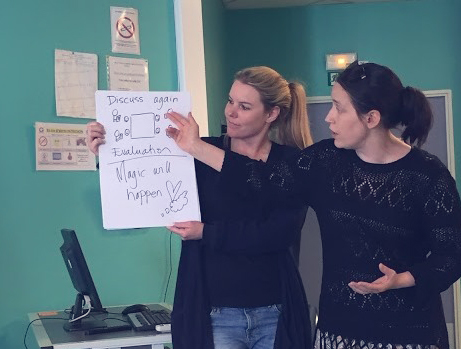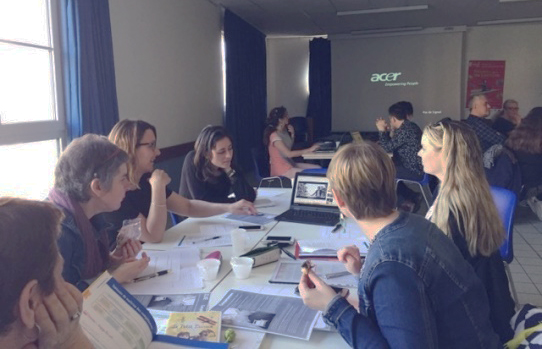Five pedagogical principles for improvement of Critical Teaching in classrooms
As a community of inquiry, the researchers and teachers reflected on the core elements needed for the development and acquisition of critical literacy and awareness. The following reflection question was posed:
If we consider that for the improvement of critical literacy we need both critical discourse analysis and critical pedagogy (what we defined as critical teaching), what should critical teaching look like and which core elements seem indispensable?
Five pedagogical principles for the improvement of CRITICAL TEACHING in classrooms were then established in collaboration between the teachers and the researchers.
1. The GOAL
The development of critical literacy and awareness should be considered as a long term and multidisciplinary goal, as a learning outcome in a short term perspective and in a concrete discipline and as a teaching method (i.e. the way we teach). It means that this perspective should be integrated from the very start in the planning of a lesson or of a teaching activity.
2. The TOPIC
Be aware of the topic you choose. We should keep in mind that it is easier for the pupils to have an opinion on a topic when they manage to establish a connection with their own environment (possibility of transfer). This does not mean that we should avoid challenging topics. A central challenge for critical teaching lies in the way we manage to connect a challenging topic to the pupils’ lives and how we make it relevant for them in their everyday lives.
3. The INTRODUCTION
Be aware of the way you introduce or present the topic. It should be possible to present the topic as a question/an inquiry task, a task or a problem that has to be answered/solved by the pupils, not only as a topic. As teachers, we do not make “propaganda”, we do not necessarily have THE answer… but the pupils should be encouraged to come up with one or more possible answers. You should accept not to be in control of the result/the meaning THEY create (but be in control of the process which leads to the creation of meaning). Priority should be given to a variety of resources (multimodal resources: “texts”, films/documentaries, visual supports/photos, digital resources…) and resources with multiple and diverse perspectives/points of view.
4. The INTERACTION
Be aware of the way you discuss the topic with the pupils, the methods of work you choose for the fulfilment of the task/inquiry. Focus on the way you ask them questions during the work. This point is also related to the final product you want the pupils to produce and the kind of critical competence you want them to work with. a. Do you want them to argue? To defend their own opinion? Consider interactional work, dialogues, and discussions between the pupils… and with the teacher. b. Do you want them to reflect? Prioritise the presentation of “research” work, a group or individual project. c. Do you want them to carry out a social action? Focus on concrete social issues and actions outside the school.
5. The ASSESSMENT
Be aware of the evaluation of critical literacy and critical awareness. There is not one correct answer and you should prioritise formative feedback. Evaluation can be carried out by the teachers or by the pupils. An important aspect here could be that the pupils should also learn to give feedback to other pupils – the “learning to learn” perspective. These 5 principles are quite similar to the characteristics of instruction that have been used for the improvement of critical thinking in other research/instructional projects focusing on: the development of the epistemological beliefs of pupils, the promotion of active learning, a problem-based curriculum, stimulating interaction between pupils and learning on the basis of real-life situations (ten Dam & Volman, 2004).


